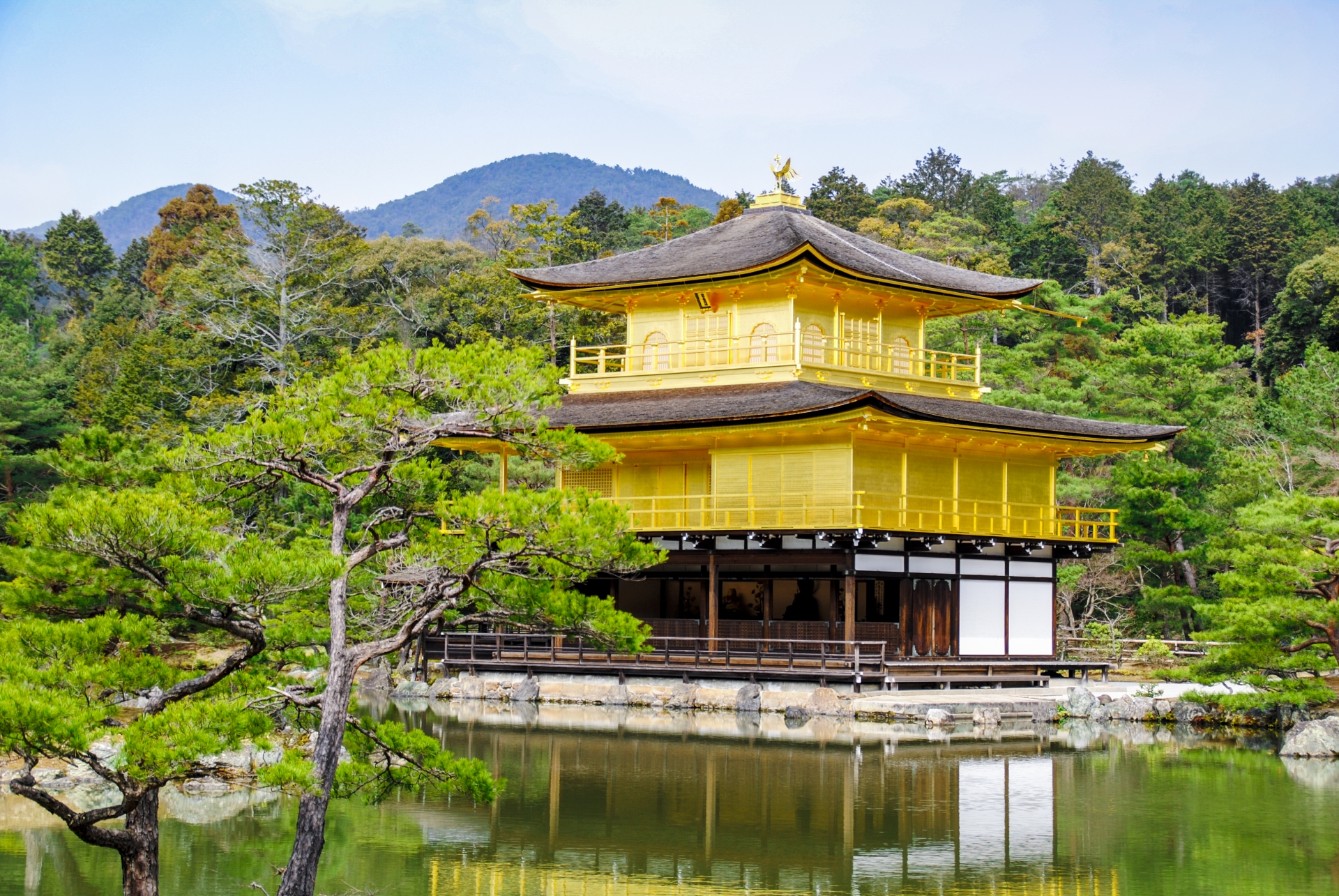Location: Kinkaku-Ji Temple
Map: Here
Kyoto, Japan, is a city filled with beautiful temples, shrines, and gardens. One of the most famous and breathtaking sites in Kyoto is the Golden Pavilion, also known as Kinkaku-ji.
This Zen Buddhist temple, covered in gold leaf, is a symbol of Japan’s rich culture and history.
In this article, we will explore the history, beauty, and significance of Kinkaku-ji, making it a must-visit destination for anyone traveling to Japan.

What is Kinkaku-ji?
Kinkaku-ji, or the Golden Pavilion, is officially called Rokuon-ji. It was originally built in the 14th century as a villa for Ashikaga Yoshimitsu, a powerful shogun. After his death, the villa was converted into a Zen Buddhist temple by his son. The temple’s golden exterior is what makes it stand out, especially when reflected in the surrounding pond.
The main structure of Kinkaku-ji is a three-story building. Each floor represents a different style of architecture.
The first floor, known as the “Chikurin-no-ma,” is built in the style of a traditional Japanese house.
The second floor, “Chōon-no-ma,” is designed in the Chinese-style, with beautiful decorative details.
The third floor, “Kekkai-no-ma,” is the most unique, with a golden phoenix statue on top.
This floor represents the Zen Buddhist philosophy, with the golden exterior symbolizing the Buddha’s purity and enlightenment.
The Beauty of Kinkaku-ji
What makes Kinkaku-ji so mesmerizing is its stunning location and design.
The temple is surrounded by lush greenery, and its reflection can be seen in the clear waters of a pond. This pond is known as the “Kyoko-chi” (Mirror Pond), and it enhances the beauty of the temple by creating a perfect mirror image of the golden pavilion.
Visitors can walk around the temple and enjoy various viewpoints that offer different perspectives of the structure. Each season offers a different view of the temple
: in spring, cherry blossoms bloom around the pond
; in summer, the greenery is vibrant and full of life
; in autumn, the colorful leaves create a beautiful contrast with the gold
; in winter, the snow-covered temple is truly a winter wonderland.
The temple is part of a larger Zen garden, which adds to the peaceful atmosphere. The garden features paths for walking meditation, along with rocks, trees, and small streams that create a serene environment for visitors to relax and reflect.
Historical Significance of Kinkaku-ji
Kinkaku-ji holds deep cultural and historical significance for Japan. It is not only a place of worship but also a symbol of Japan’s feudal era and the Zen Buddhist teachings that influenced the country. The temple was originally built to represent the power and wealth of the Ashikaga shogunate, and it has since become a representation of Japanese art, architecture, and religious beliefs.
Throughout history, the temple has faced destruction and rebuilding. In 1950, the pavilion was set on fire by a young monk, which caused widespread shock. However, the temple was rebuilt in the early 1950s, and today, it stands as a UNESCO World Heritage Site, protected for future generations to appreciate.
Visiting Kinkaku-ji
Kinkaku-ji is one of the most popular tourist destinations in Japan. When you visit, you will find that it is a peaceful and beautiful place, ideal for relaxation and reflection. The temple is located in northern Kyoto, and it is easily accessible by public transportation.
There is an entrance fee to visit the temple, which helps with its maintenance and preservation. Visitors are encouraged to respect the temple’s peaceful environment and follow the rules, such as not touching the temple’s structure and keeping noise levels low.
In addition to the temple itself, there are several shops and stalls near the entrance where you can buy traditional Japanese souvenirs, such as tea, sweets, and handmade crafts. It’s a great place to pick up a unique gift to remember your visit.
Tips for Visiting Kinkaku-ji
Visit Early in the Morning or Late Afternoon: To avoid the crowds, it’s best to visit Kinkaku-ji early in the morning or late in the afternoon. This will also allow you to enjoy the temple in different lighting conditions, especially during the golden hour when the temple’s gold shines even brighter.
Conclusion
Kinkaku-ji, or the Golden Pavilion, is one of Japan’s most iconic landmarks. Its striking beauty, rich history, and peaceful atmosphere make it a must-see destination for anyone visiting Kyoto. Whether you’re interested in Japanese culture, history, or simply want to experience one of the most picturesque temples in the world, Kinkaku-ji offers an unforgettable experience. Be sure to visit this incredible temple to admire its stunning golden exterior, tranquil gardens, and breathtaking views.
When visiting Kyoto, use BagDrop to easily store your luggage and enjoy a comfortable trip. By leaving your bags behind, you can fully enjoy the sightseeing spots. You can explore the streets of Kyoto without the burden of heavy luggage, moving freely. Even when visiting Kinkaku-ji, you can experience it comfortably. Be sure to take advantage of BagDrop and have a wonderful time in Kyoto.
